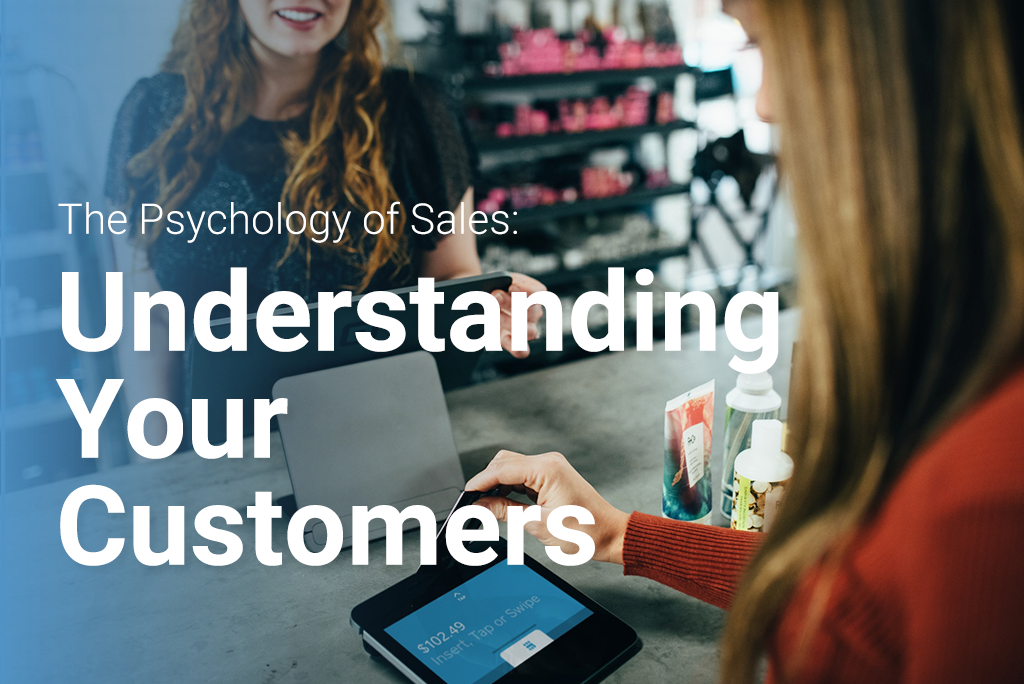No products in the cart.
Business
The Psychology of Sales: Understanding Your Customers
The Psychology of Sales is a fascinating field of study that explores the psychological aspects of selling and customer behavior. It is a complex and ever-evolving field that requires an understanding of the motivations and needs of customers in order to be successful. By understanding the psychology of sales, businesses can better understand their customers and create effective sales strategies that will help them to increase their sales and profits. This article will provide an overview of the psychology of sales, including the different types of customer behavior, the importance of understanding customer needs, and the strategies that can be used to increase sales.
How to Use Psychology to Understand Your Customers’ Buying Habits
Understanding your customers’ buying habits is essential for any business. By leveraging the power of psychology, you can gain valuable insights into why customers make the decisions they do and how to better meet their needs. Here are some tips for using psychology to understand your customers’ buying habits.
1. Understand the Customer’s Motivation: The first step in understanding your customers’ buying habits is to understand their motivation. What is driving them to make a purchase? Are they looking for convenience, quality, or a good deal? Understanding the customer’s motivation can help you tailor your products and services to meet their needs.
2. Leverage the Power of Social Proof: People are more likely to make a purchase if they see that others have already done so. Leverage the power of social proof by displaying customer reviews and testimonials on your website or in your store. This will help customers feel more confident in their decision to purchase from you. Build your social presence by using the Boppr app!
3. Utilize Scarcity Tactics: People are more likely to make a purchase if they feel like they are getting a good deal or that the item is in limited supply. Utilize scarcity tactics such as limited-time offers or limited-quantity items to encourage customers to make a purchase.
4. Appeal to Emotions: People are more likely to make a purchase if they feel an emotional connection to the product or service. Appeal to customers’ emotions by telling stories or highlighting the benefits of your product or service.
By understanding your customers’ buying habits and leveraging the power of psychology, you can better meet their needs and increase sales. Use these tips to get started.
The Role of Empathy in Sales: How to Connect with Your Customers
Empathy is an essential tool for sales professionals, as it allows them to connect with their customers on a deeper level. By understanding the customer’s needs and feelings, sales professionals can create a more meaningful and successful relationship.
The first step in developing empathy is to listen to the customer. This means actively listening to what the customer is saying and understanding their needs and feelings. It is important to be patient and attentive, and to ask questions to gain a better understanding of the customer’s situation.
The second step is to show genuine interest in the customer. This means being genuinely interested in their needs and feelings, and showing that you care about their situation. This can be done by asking questions, offering advice, and providing support.
The third step is to be empathetic. This means understanding the customer’s feelings and needs, and being able to relate to them. It is important to be able to put yourself in the customer’s shoes and to understand their perspective.
The fourth step is to be honest and transparent. This means being honest about your product or service, and being open and transparent about the process. This will help build trust and create a more meaningful relationship with the customer.
Finally, it is important to be patient and understanding. This means being patient with the customer and understanding their needs and feelings. It is important to be understanding and to take the time to explain things in a way that the customer can understand.
By following these steps, sales professionals can create a more meaningful and successful relationship with their customers. By understanding the customer’s needs and feelings, sales professionals can create a more meaningful and successful relationship. Empathy is an essential tool for sales professionals, as it allows them to connect with their customers on a deeper level.
The Power of Storytelling in Sales: How to Engage Your Customers
Storytelling is a powerful tool for sales professionals. It can help engage customers, build relationships, and ultimately close more deals. By using stories to illustrate a point, salespeople can create an emotional connection with their customers and make their products and services more memorable.
When crafting a story for sales, it’s important to focus on the customer’s needs and wants. Start by understanding the customer’s problem and then craft a story that illustrates how your product or service can solve it. Make sure to include details that will help the customer visualize the solution.
It’s also important to use language that resonates with the customer. Use words and phrases that the customer can relate to and that will help them understand the value of your product or service.
When telling a story, it’s important to keep it concise and to the point. Don’t get bogged down in details that don’t add value to the story. Instead, focus on the key points that will help the customer understand the value of your product or service.
Finally, make sure to end the story with a call to action. This could be a request for the customer to take the next step in the sales process or to contact you for more information.
By using storytelling in sales, salespeople can create an emotional connection with their customers and make their products and services more memorable. By understanding the customer’s needs and wants, crafting a story that illustrates how your product or service can solve their problem, and using language that resonates with the customer, salespeople can engage their customers and close more deals.
The Psychology of Pricing: How to Price Your Products for Maximum Impact
Pricing is an essential part of any business, and it can have a significant impact on the success of a product or service. Understanding the psychology of pricing can help you set prices that maximize your profits and ensure customer satisfaction.
The first step in pricing your products is to understand the value of your product or service. Consider the cost of production, the cost of marketing, and the cost of customer service. Also, consider the value that your product or service provides to customers. This will help you determine the right price for your product or service.
Once you have determined the value of your product or service, you can begin to consider the psychology of pricing. People tend to perceive prices differently depending on the context. For example, people may perceive a price of $99 as being much lower than a price of $100. This is known as the “left-digit effect” and can be used to your advantage when setting prices.
Another important factor to consider is the perceived value of your product or service. People are more likely to purchase a product or service if they perceive it to be of high value. Consider offering discounts or promotions to increase the perceived value of your product or service.
Finally, consider the impact of pricing on customer loyalty. People are more likely to purchase from a company that offers competitive prices and discounts. Offering loyalty programs or discounts for repeat customers can help to increase customer loyalty and boost sales.
By understanding the psychology of pricing, you can set prices that maximize your profits and ensure customer satisfaction. Consider the value of your product or service, the context of the price, and the impact of pricing on customer loyalty when setting prices for your products or services.
The Impact of Color Psychology on Sales: How to Use Color to Influence Your Customers
The use of color in marketing and sales has long been a topic of interest for businesses. Color psychology is the study of how colors affect our emotions and behavior, and it can be used to influence customers’ buying decisions. By understanding the impact of color psychology on sales, businesses can use color to create an emotional connection with their customers and increase their sales.
Color has the power to evoke certain emotions and feelings in people. For example, the color red is often associated with passion, energy, and excitement, while blue is often associated with trustworthiness and reliability. By understanding the psychological effects of color, businesses can use color to create an emotional connection with their customers and influence their buying decisions.
Businesses can use color to create a sense of urgency and encourage customers to make a purchase. For example, using bright colors such as red and orange can create a sense of urgency and encourage customers to act quickly. Similarly, using calming colors such as blue and green can create a sense of trust and reliability, which can help customers feel more comfortable making a purchase.
Businesses can also use color to create a sense of exclusivity and encourage customers to purchase higher-end products. For example, using luxurious colors such as gold and silver can create a sense of exclusivity and encourage customers to purchase higher-end products. Similarly, using bright colors such as yellow and orange can create a sense of excitement and encourage customers to purchase more expensive items.
Finally, businesses can use color to create a sense of familiarity and encourage customers to purchase products they are familiar with. For example, using colors that are associated with a particular brand can create a sense of familiarity and encourage customers to purchase products from that brand. Similarly, using colors that are associated with a particular product can create a sense of familiarity and encourage customers to purchase that product.
By understanding the impact of color psychology on sales, businesses can use color to create an emotional connection with their customers and influence their buying decisions. By using the right colors in their marketing and sales materials, businesses can create a sense of urgency, exclusivity, and familiarity, which can help them increase their sales.
Q&A
1. What is the psychology of sales?
The psychology of sales is the study of how people make decisions when it comes to buying products or services. It looks at the psychological factors that influence a customer’s decision-making process, such as their emotions, motivations, and beliefs.
2. How can understanding the psychology of sales help me as a salesperson?
Understanding the psychology of sales can help you better understand your customers and their needs. By understanding their motivations and emotions, you can tailor your sales pitch to better meet their needs and increase your chances of making a sale.
3. What are some common psychological factors that influence customer decision-making?
Common psychological factors that influence customer decision-making include emotions, beliefs, values, and motivations. Understanding these factors can help you better understand your customers and tailor your sales pitch to meet their needs.
4. What are some techniques I can use to better understand my customers?
Some techniques you can use to better understand your customers include active listening, asking questions, and observing customer behavior. By actively listening to your customers and asking questions, you can gain insight into their needs and motivations.
5. How can I use the psychology of sales to increase my sales?
By understanding the psychology of sales, you can tailor your sales pitch to better meet your customers’ needs. You can also use psychological techniques such as active listening and asking questions to gain insight into your customers’ needs and motivations. By understanding your customers, you can increase your chances of making a sale.
Conclusion
The Psychology of Sales is an invaluable tool for any salesperson. By understanding the psychology of customers, salespeople can better understand their customers’ needs and motivations, and use this knowledge to create more effective sales strategies. By understanding the psychology of sales, salespeople can create more meaningful relationships with their customers, build trust, and ultimately increase their sales.





